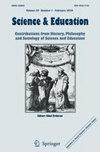Is There a Limit to Resemblances?
Abstract
Abstract
The notion of family resemblance has recently emerged as a promising and fruitful approach to characterising the nature of science (NOS) in science education research, offering solutions to some perplexing challenges such as capturing both the domain-general and domain-specific features of science with a single framework. At the same time, however, criticism has been levelled that the resemblance might eventually extend to certain activities that are not scientific but pose as science. This would be an undesirable consequence for science educators, particularly given the increasing need for individuals to discern pseudoscientific claims circulated on social media from scientific information. Many pseudoscientific and non-scientific activities resemble science in terms of their aim to explain nature, their use of evidence-based methods, and their interrelation with politics and society. In this theoretical article, we build on the concept of family resemblance to consider how it can simultaneously explain the diversity and unity of science and help students to learn about the nature of science and that of pseudoscience in science education. We put forward three principles that can guide teaching about pseudoscience based on the family resemblance conceptualisation of science.

 求助内容:
求助内容: 应助结果提醒方式:
应助结果提醒方式:


